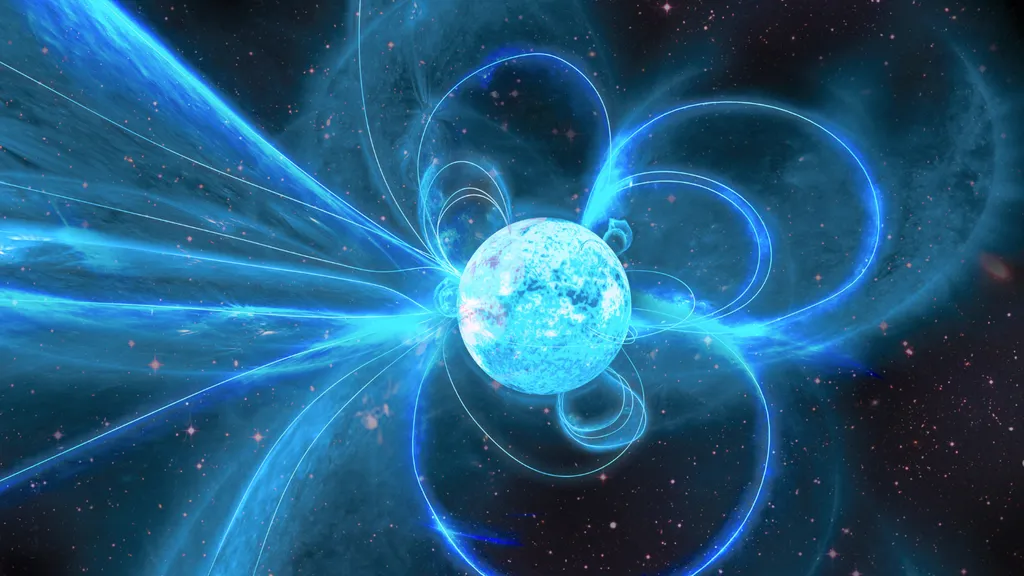Scientists were astounded when they witnessed a "dead" neutron star with one of the most powerful magnetic fields in the cosmos unexpectedly spring back to life.
The reactivation of this highly magnetic neutron star or "magnetar" doesn't conform to the current understanding of these exotic celestial objects.
The team made the discovery of this magnetar's return from the dead when they spotted strange radio signals from the closest known magnetar to Earth, XTE J1810-197, located around 8,000 light-years away, using the Australian Commonwealth Scientific and Industrial Research Organisation (CSIRO) Parkes radio telescope, Murriyang.
Most magnetars are known to emit polarized light, light with waves orientated in one particular direction.
The team's findings show that the light this magnetar is circularly polarized, appearing to spiral as it moves through space.
This is not only unexpected, it's also totally unprecedented.
Source
The reactivation of this highly magnetic neutron star or "magnetar" doesn't conform to the current understanding of these exotic celestial objects.
The team made the discovery of this magnetar's return from the dead when they spotted strange radio signals from the closest known magnetar to Earth, XTE J1810-197, located around 8,000 light-years away, using the Australian Commonwealth Scientific and Industrial Research Organisation (CSIRO) Parkes radio telescope, Murriyang.
Most magnetars are known to emit polarized light, light with waves orientated in one particular direction.
The team's findings show that the light this magnetar is circularly polarized, appearing to spiral as it moves through space.
This is not only unexpected, it's also totally unprecedented.
Source






















